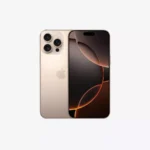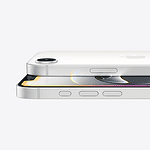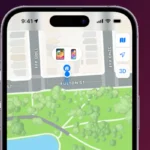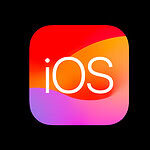Apple CarPlay is a smart system that links your iPhone to your car’s dashboard. It lets you use your favorite apps while keeping your eyes on the road. Apple CarPlay makes driving safer by showing your iPhone apps on your car’s screen, so you can get directions, make calls, send messages, and play music without touching your phone.
Setting up CarPlay is easy. You just plug your iPhone into your car’s USB port or connect wirelessly if your car supports it. Once connected, your car’s screen shows familiar iPhone icons for apps like Maps, Phone, Messages, and Music. This simple setup works with most cars made after 2016 and needs an iPhone 5 or newer.
CarPlay works with your car’s built-in controls, so you can use buttons, touchscreens, or voice commands with Siri. This means you can ask Siri to play music, find directions, or read text messages without taking your hands off the wheel. The system is designed to help you stay focused on driving while still staying connected.
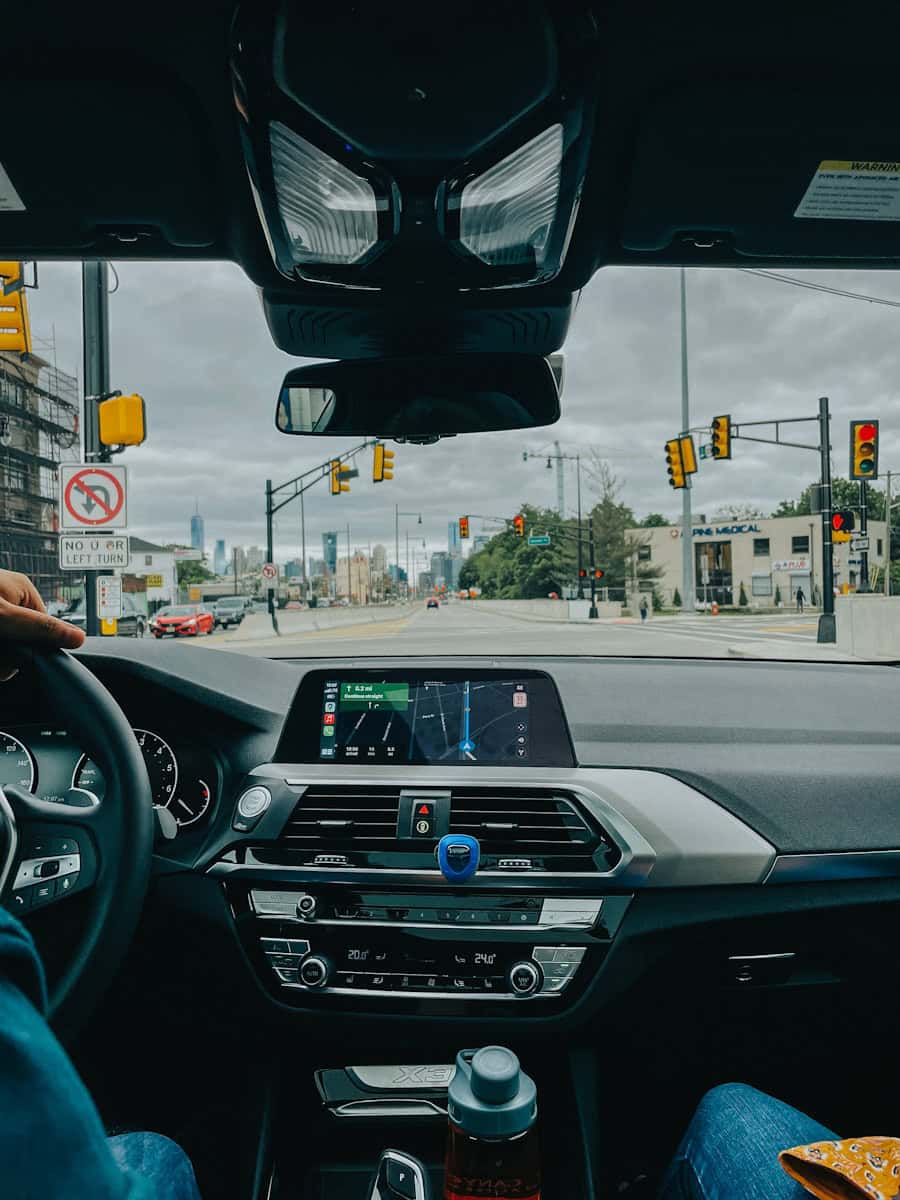
New Features Coming To CarPlay
Apple’s CarPlay is evolving once again. With the upcoming release of iOS 18.4, users will experience a host of new features designed to improve their driving experience and enhance how they interact with their vehicles. Whether you’re a tech enthusiast or someone who just wants a smoother, more efficient ride, these updates are something to look forward to. Here’s what you need to know about what’s coming to CarPlay in the near future.
1. A Third Row of App Icons for Bigger Displays
With larger vehicle screens becoming more common, Apple has responded by introducing a third row of app icons in CarPlay. This update will allow users to see and access even more apps on their CarPlay interface, especially in vehicles with larger displays, providing a more streamlined and accessible experience.
Key Benefits:
- More Apps on Screen: No need to swipe through multiple pages to find what you need.
- Improved Visibility: Quickly access your apps without cluttering your dashboard.
- Enhanced User Experience: Perfect for cars that come equipped with expansive displays.
This change is subtle yet impactful, making the most of larger screens while keeping the interface clean and functional.
2. Sports Integration: Keep Up With Your Teams
For sports fans, CarPlay’s newest feature may be a game-changer. Apple is integrating sports apps directly into the CarPlay interface. Whether you’re a football, basketball, or soccer fan, you can now keep up with live scores and updates while on the road, without ever needing to take your eyes off the road.
What’s Included:
- Real-time Scores: Get live score updates from your favorite teams.
- Upcoming Game Notifications: Stay informed on future games and schedules.
- Interactive Features: See detailed statistics and scores directly on your display.
This feature aims to keep sports fans connected with the action, no matter where they are.
3. Default Navigation App for EU Users
In a move that will likely appeal to many drivers, Apple is allowing users in the European Union to select their preferred navigation app as the default for CarPlay. Gone are the days when Siri would automatically use Apple Maps when asking for directions. Now, drivers can choose alternatives like Google Maps or Waze and have Siri direct them accordingly.
Why This Is Important:
- Personalization: Tailor your CarPlay experience by using your favorite navigation app.
- Siri’s Flexibility: With one command, Siri will know to use your default map service.
- Better Navigation Choices: Navigate with the app you trust most.
For users in the EU, this is a significant step toward customization and convenience.
4. Enhanced Widget Support for a Cleaner Look
Apple is pushing for more customization options, and one area that’s getting an upgrade is widget support. In iOS 18.4, CarPlay will allow users to add more widgets to their dashboard, giving them at-a-glance access to important information like weather, music controls, and even news updates.
New Features Include:
- Customizable Dashboard: Arrange widgets according to your preferences.
- Quick Access: View important information without opening apps.
- Better Integration: Access music, calendar events, and news from the same screen.
This change will help users stay organized without feeling overwhelmed by an overly crowded interface.
5. Expanded Compatibility with New Car Models
While CarPlay has supported a broad range of vehicles for some time, Apple is continuously expanding its compatibility with more car manufacturers and models. This means that drivers of both older and newer cars will benefit from these exciting updates, ensuring that CarPlay’s features are available to a wide audience.
What’s New:
- Broader Car Manufacturer Support: Expect CarPlay to be available in a growing number of car models.
- Improved Integration: Seamless integration with vehicle-specific features like climate controls and seat adjustments.
Apple’s push for broader compatibility means even more drivers will have the chance to experience these new features.
6. Better Voice Command Functionality
Voice control in CarPlay has always been a selling point, but with iOS 18.4, the system is getting even smarter. Expect faster and more accurate voice recognition, along with expanded voice commands. These upgrades will make it easier than ever to control everything from navigation to entertainment, all with a simple voice prompt.
Key Improvements:
- Faster Response Times: Get quicker and more accurate results when you give voice commands.
- Expanded Command List: Use more varied and nuanced phrases to control apps and features.
- Improved Siri Experience: Siri will recognize your voice better and offer more tailored responses.
Voice control is becoming an even more integral part of the CarPlay experience, and with these upgrades, you can rely on it for an even smoother ride.
7. Improved Connectivity and CarPlay Stability
Apple is always striving for better performance, and with this new update, CarPlay users can expect improvements in both connectivity and overall system stability. With more vehicles offering wireless CarPlay, ensuring a seamless and uninterrupted experience is essential. Apple’s continued focus on refining its wireless capabilities means fewer dropouts and smoother connections for drivers.
What You Can Expect:
- Stable Connections: Fewer interruptions and glitches when connected wirelessly.
- Fast Pairing: Quick and easy connection to your vehicle’s CarPlay system.
- Optimized Performance: Better performance when using multiple apps simultaneously.
These changes aim to make CarPlay more reliable, whether you’re navigating, streaming music, or controlling your vehicle’s settings.
With these exciting new features, CarPlay is set to become an even more essential tool for drivers who rely on technology in their vehicles. From customizations to sports updates and more seamless connectivity, Apple is clearly focused on making driving both easier and more enjoyable. Keep an eye out for iOS 18.4, as these features will soon be available to transform your driving experience.
What Is Still Missing From CarPlay
Despite its advancements, Apple CarPlay continues to face several shortcomings that have left users and industry observers expressing dissatisfaction. These gaps highlight areas where CarPlay falls short of user expectations and where competitors have seized opportunities to innovate.
1. Absence of Next-Generation CarPlay Features
Apple’s much-anticipated next-generation CarPlay, first announced in 2022 with promises of a 2024 release, has yet to materialize. This version was expected to offer deeper integration with vehicle systems, extending beyond infotainment to include control over climate settings, seat heating, and more. However, as of March 2025, these features remain unavailable, leading to frustration among consumers and skepticism regarding Apple’s commitment to the project.
User Feedback:
“Apple promised next-gen CarPlay in 2024, so where is it?”
2. Limited Support from Automakers
While many vehicle manufacturers have adopted CarPlay, some have been slow to integrate its latest features or have chosen alternative systems. For instance, General Motors (GM) has removed CarPlay and Android Auto support from many of its electric vehicles, opting instead for its proprietary Ultifi system. This decision has drawn criticism from consumers who value CarPlay’s functionality and familiarity.
User Feedback:
“GM blocks dealership from installing Apple CarPlay retrofit kits in EVs.”
3. Inconsistent Wireless CarPlay Performance
Wireless CarPlay aims to eliminate the need for physical connections, offering a seamless experience. However, users have reported connectivity issues, such as the system failing to connect automatically or dropping the connection unexpectedly. These reliability concerns hinder the convenience that wireless CarPlay promises.
User Feedback:
“Once you convert your CarPlay to wireless, you’ll wonder how you lived without it.”
4. Limited Integration with Vehicle Systems
While CarPlay provides access to a range of apps, its integration with certain vehicle-specific systems remains limited. For example, BMW’s Panoramic iDrive system offers a panoramic display and head-up display powered by BMW Operating System X. However, CarPlay apps may not be fully compatible with these displays, limiting functionality such as viewing maps or accessing vehicle-specific apps.
User Feedback:
“BMW’s highly anticipated new display upgrade has a serious flaw that threatens fan-favorite car app.”
5. Absence of a Native CarPlay App Store
Unlike smartphones, CarPlay does not feature a dedicated app store for users to browse and install applications directly onto their vehicle’s infotainment system. This absence limits the customization and personalization options available to users, who must rely on app availability and compatibility determined by automakers and Apple.
User Feedback:
“Apple CarPlay Disappeared – BMW X3 Forum.”
6. Compatibility Issues with Older Vehicles
Many drivers of older vehicle models face challenges when attempting to retrofit their cars with CarPlay functionality. While aftermarket solutions exist, they may not offer the seamless integration found in newer models, leading to a subpar user experience. Additionally, some manufacturers restrict the installation of third-party CarPlay kits, limiting options for consumers.
User Feedback:
“Unreliable about the compensation of missing CarPlay.”
7. Limited Support for Non-Apple Services
CarPlay is designed to work seamlessly with Apple services such as Apple Maps, Apple Music, and Siri. However, integration with non-Apple services can be inconsistent. For instance, some users have reported issues with third-party navigation apps like Google Maps and Waze, including crashes and connectivity problems.
Additional User Complaints and Missing Features in CarPlay
As Apple continues to innovate with CarPlay, some features remain sorely absent, leading to frustration among users. Below are some of the most notable gaps and recurring complaints based on user feedback.
8. The Lack of Basic Weather Features
One of the most common complaints from users is the absence of a native weather app or weather display on CarPlay. While third-party apps like Weatherology, MyRadar, and Carrot Weather provide some solutions, they aren’t always ideal. Many users express their dissatisfaction with how weather information is either buried under layers of settings or unavailable altogether in the CarPlay interface.
What Users Are Asking For:
- Native Weather App: Similar to how weather apps work on other Apple devices, many users want a straightforward, easily accessible weather app directly on CarPlay.
- Weather Widgets: A simple, always-visible weather widget on the main CarPlay screen would be an invaluable feature for users, particularly in regions prone to frequent weather changes like storms or heavy snow.
- Accurate Weather Alerts: Some users have also expressed frustration over the lack of proactive weather notifications, such as alerts about severe weather or approaching precipitation. These could help drivers make informed decisions while on the road.
9. Missing Support for Common Smart Home Devices
Another area where CarPlay falls short is in integrating with popular smart home systems. For example, MyQ, a popular garage door opener, is not natively supported by CarPlay, despite its compatibility with Apple’s HomeKit. While some users have found workarounds, such as using Siri shortcuts or third-party solutions like Meross, the lack of official integration remains a major issue for many.
What Users Want:
- More Smart Home Integrations: Native support for popular home automation devices, especially garage door openers, lights, and locks, would make CarPlay a more central hub for controlling a connected home.
10. CarPlay’s Inability to Pick Up Where You Left Off
Another frequent complaint is CarPlay’s lack of session persistence. Many users are frustrated that when they turn off their car and restart it, CarPlay defaults to the home screen, forcing them to navigate back to the last used app or screen. This inconvenience is particularly noticeable for people who use CarPlay to listen to music or podcasts, as they often have to dive into multiple layers of navigation to resume playback.
Desired Feature:
- Resuming Where You Left Off: Users want CarPlay to remember their last activity, whether it’s playing a podcast, navigating, or using any other app, and return to it upon restarting the car.
11. No Support for Basic Features Like Calendar Reminders or Text Notifications
While CarPlay offers a solid experience for navigation and media, it’s missing some basic features that many users expect. For example, notifications for upcoming calendar events or incoming text messages are not as seamless as they could be. Some users report that CarPlay either fails to read certain notifications aloud or doesn’t display them as clearly as it should.
What’s Being Requested:
- Calendar and Text Notifications: Users want an easier way to see and manage text messages, calendar reminders, and other notifications without needing to interact heavily with the screen. A streamlined interface that displays these notifications clearly would enhance the experience.
12. Lack of Full Customization Options
For those with larger, aftermarket screens, the lack of customization remains a sore point. Many users with larger or high-resolution displays feel that CarPlay does not take full advantage of their vehicle’s screen size. Some complain that the icons are too large, while others express a desire for more flexible layout options that would allow them to arrange and prioritize apps according to personal preference.
Key Requests:
- Smarter App Layouts: Customizable icon sizes and app arrangements that fit the display size and personal preferences of the user.
- Home Screen Customization: The ability to pin specific apps or set up widgets on the main screen for quicker access would help make CarPlay more intuitive and efficient for users with larger screens.
13. No Native Support for Sports Apps
While the addition of sports app integration in CarPlay is a welcome step, users are still waiting for full, native support for tracking sports scores or following live games through CarPlay. Many people are asking for a more seamless way to view scores, game highlights, and news without needing to open a third-party app each time.
Desired Feature:
- Native Sports App Integration: Users want a dedicated space within CarPlay to follow their favorite teams, including real-time score updates, breaking news, and highlights, all integrated into the CarPlay interface.
These missing features highlight the continuing need for more customization, better integration with smart home devices, and more intuitive, user-centric designs. As Apple works toward refining CarPlay, it’s clear that addressing these gaps could significantly enhance the overall experience for a wider range of users.
Key Takeaways
- CarPlay connects your iPhone to your car for safer access to maps, calls, messages, and music while driving.
- You can control CarPlay with Siri voice commands, touchscreens, or steering wheel buttons without looking at your phone.
- Most cars since 2016 support CarPlay, and it works with iPhone 5 or newer running recent iOS versions.
Overview of Apple CarPlay
Apple CarPlay transforms your car’s dashboard into an extension of your iPhone, making it easier and safer to use apps while driving. This system connects your phone to your vehicle, allowing access to navigation, communication, and entertainment features through a familiar interface.
Compatibility and Availability
CarPlay works with iPhone 5 and newer models running at least iOS 7. Over 600 car models now support this technology, with more being added regularly. Major automakers like Ford, Honda, Audi, Jaguar, Mercedes-Benz, Nissan, and Volvo have embraced CarPlay in their vehicles.
Most new cars come with CarPlay built-in. Some older models can be upgraded with aftermarket head units that support the system.
The feature is available in over 36 countries worldwide. Connection methods vary by vehicle – some require a USB cable while newer models offer wireless CarPlay.
Not all cars include CarPlay as standard equipment. It may be part of an optional tech or convenience package in some vehicles, so check with manufacturers before buying.
The User Interface
CarPlay’s interface is clean and simple, designed to be easily used while driving. The home screen shows large, familiar app icons arranged in a grid pattern similar to an iPhone.
Key UI elements include:
- Large, easy-to-tap app icons
- Simplified app versions optimized for driving
- Siri voice control for hands-free operation
- Dark background to reduce eye strain
The system takes over your car’s built-in display when connected. It maintains a consistent look across different vehicle brands, making it easy to use regardless of what car you drive.
Apps appear in a simplified format with larger buttons and text. This design helps reduce distraction while driving.
Siri plays a major role in the interface, allowing voice commands for many functions without taking your hands off the wheel.
Key Features
CarPlay offers several essential features that enhance the driving experience:
Navigation: Access Apple Maps or third-party options like Google Maps and Waze for turn-by-turn directions, traffic updates, and points of interest.
Communication: Make calls, send texts, and listen to voicemail hands-free using Siri. The system can read messages aloud and let you dictate replies.
Entertainment: Control music apps like Apple Music, Spotify, and Pandora. Listen to podcasts, audiobooks, and radio stations through apps like Apple Podcasts or iHeartRadio.
Voice Assistant: Siri integration lets you control most features with voice commands, keeping your eyes on the road.
CarPlay also supports calendar apps to view appointments and WhatsApp for messaging beyond standard texts. The system continues to add new app categories as it evolves.
Setting Up CarPlay
Setting up Apple CarPlay in your vehicle is simple once you understand the connection options and pairing process. The system offers both wired and wireless connectivity depending on your car’s capabilities.
Wired and Wireless Connection
To set up wired CarPlay, you need a compatible iPhone and a Lightning cable. Simply connect your iPhone to your car’s USB port that supports CarPlay. Make sure your vehicle is in park with the parking brake engaged.
The system should automatically launch on your car’s display. If it doesn’t start right away, look for the CarPlay icon on your car’s infotainment system.
For Wireless CarPlay, your car must support this feature. Turn on your car’s stereo and ensure it’s in Bluetooth or wireless mode.
On your iPhone, go to Settings > Wi-Fi and make sure it’s turned on. Then go to Settings > General > CarPlay to select your car. Some vehicles might require you to press and hold the voice command button on your steering wheel to start the setup process.
Bluetooth Pairing Process
Before using CarPlay, you’ll need to pair your iPhone with your car’s Bluetooth system. Start by turning on Bluetooth on your iPhone through Settings > Bluetooth.
Put your car’s stereo in Bluetooth pairing mode. This usually involves pressing a phone button or navigating to the Bluetooth menu on your infotainment screen.
Select your car when it appears in the available devices list on your iPhone. You might need to confirm a pairing code on both devices.
Once paired, go to Settings > General > CarPlay on your iPhone. Select your car from the available options. There’s no complicated setup required – the system should work automatically after the initial pairing.
For the best experience, make sure Auto-Join is turned on for your CarPlay connection in your iPhone settings.
Core Functionality
Apple CarPlay offers key features that make using your iPhone while driving safer and more convenient. These functions focus on communication and voice control to keep your hands on the wheel.
Phone Calls and Messaging
CarPlay makes handling calls and texts simple while driving. You can make phone calls through your car’s speakers and microphone without touching your phone. The interface shows your contacts, recent calls, and a keypad that’s easy to use.
For messages, CarPlay can read your texts aloud so you don’t need to look at your screen. You can dictate and hear texts with simple voice commands. This works with the Messages app and other apps like WhatsApp.
The message notification appears briefly on your screen. CarPlay reads the message out loud and asks if you want to reply. You can say your response, and CarPlay will send it for you.
Siri Voice Assistant
Siri is at the heart of CarPlay’s hands-free experience. You can activate Siri by pressing a button on your steering wheel or saying “Hey Siri” if your car supports it.
With voice commands, you can control almost every CarPlay function. Ask Siri to call someone, send a message, play music, or get directions. For example, say “Call Mom” or “Text John I’ll be late.”
Siri can also help with finding locations. Just say “Find the nearest gas station” or “Take me home,” and Siri will start navigation. This keeps your focus on driving rather than looking at screens.
The assistant understands natural language, so you don’t need to memorize specific commands. Just speak normally, and Siri will usually understand what you need.
Media and Entertainment
CarPlay transforms your car into an entertainment hub with access to your favorite music, podcasts, and radio stations. You can control these apps with Siri voice commands or your car’s touchscreen for a safer driving experience.
Music and Audio Apps
CarPlay supports many popular music streaming services. You can listen to Apple Music and access your entire library, including playlists and radio stations. The interface is simple with large buttons for easy tapping while driving.
Spotify works well with CarPlay too, showing your playlists, liked songs, and recommendations. Other supported apps include Tidal, Amazon Music, and YouTube Music, each with their own CarPlay-optimized interface.
Pandora users can enjoy personalized stations and playlists. The app shows album artwork and playback controls clearly on your car’s display.
Most music apps let you browse by artist, album, or playlist. You can also use Siri to play specific songs without touching your phone. Just say “Hey Siri, play Taylor Swift” or “Play my Road Trip playlist.”
Radio and Podcasts
CarPlay makes it easy to enjoy radio stations and podcasts on the road. The Apple Podcasts app shows your subscribed shows and new episodes. You can pick up where you left off on your phone automatically.
iHeartRadio brings thousands of live radio stations to your car. The app organizes stations by genre and location, making it easy to find local news or your favorite music style.
SiriusXM and traditional FM radio can be accessed through CarPlay as well. Many cars integrate their built-in radio with the CarPlay interface for a seamless experience.
Podcast fans can also use apps like Stitcher for their listening needs. Audible works with CarPlay too, letting you listen to audiobooks during your commute.
The controls for all these apps are large and simple. You can pause, skip, or restart with just a tap, making it safer to use while driving.
Navigation and Maps
CarPlay transforms your car’s display into a powerful navigation tool. It offers seamless map functionality with both Apple’s native solution and popular third-party options to help you reach your destination safely.
Apple Maps and Turn-By-Turn Directions
Apple Maps is the default navigation system in CarPlay. It provides clear, easy-to-follow directions with lane guidance and speed limit information. The interface shows your route with a 3D view of buildings and landmarks to help you recognize your surroundings.
Voice guidance through turn-by-turn directions lets you keep your eyes on the road. Apple Maps announces upcoming turns, exits, and street names through your car speakers.
You can start navigation before entering your car. The route seamlessly transfers to CarPlay when you connect your iPhone.
Apple Maps also shows real-time traffic conditions with color-coded roads. Red sections indicate heavy traffic, while green means clear roads ahead. This feature helps you avoid delays on your journey.
To start navigation, simply ask Siri: “Navigate to the nearest gas station” or “Take me home.” This hands-free capability makes CarPlay truly safer to use while driving.
Integration with Third-Party Apps
CarPlay isn’t limited to Apple Maps. It works with popular third-party navigation apps like Google Maps and Waze. These apps appear on your CarPlay home screen after installation on your iPhone.
Google Maps offers similar features to Apple Maps but with Google’s extensive mapping data. Many users prefer its search capabilities and accuracy in certain regions.
Waze stands out with its crowd-sourced traffic data. Users report accidents, police, and hazards in real-time. This community approach often helps drivers find faster routes during heavy traffic.
To switch between navigation apps:
- Tap the app icon on the CarPlay home screen
- Use Siri by saying “Open Waze” or “Navigate with Google Maps”
Each app maintains its unique interface while adapting to the CarPlay display format. This consistency helps users familiar with these apps on their phones to use them easily in their vehicles.
The ability to choose navigation apps gives drivers flexibility based on their preferences and destination.
Safety Features
Apple CarPlay includes several safety features designed to help drivers stay focused on the road. These tools reduce distractions and allow for hands-free operation while driving.
Do Not Disturb While Driving
CarPlay works with your iPhone’s Do Not Disturb While Driving feature to cut down on distractions. When activated, this mode blocks notifications and alerts that might pull your attention from the road.
The system can turn on automatically when connected to your car’s Bluetooth or when it detects driving motion. It sends auto-replies to text messages, letting people know you’re driving.
Voice commands through Siri play a key role in CarPlay’s safety design. Drivers can make calls, send texts, get directions, and control music without taking their hands off the wheel.
CarPlay also limits certain apps and features while the car is moving. This might seem annoying at times, but these limits help keep drivers safe.
Some cars let passengers use an override option for restricted functions, but the main goal is always to keep the driver’s eyes on the road and hands on the wheel.
Comparing with Competitors
When choosing an in-car infotainment system, understanding the differences between Apple CarPlay and its main rival helps drivers make the best choice for their needs. The systems differ in interface design, app availability, and user experience.
Apple CarPlay vs Android Auto
Apple CarPlay and Android Auto offer similar features but with key differences that may matter to drivers. The most basic distinction is device compatibility – CarPlay works exclusively with iPhones while Android Auto connects with Android smartphones.
CarPlay is known for its clean, simple interface that mirrors the iOS experience. Many users find it easier to navigate while driving compared to Android Auto’s more detailed display.
For maps and navigation, CarPlay relies primarily on Apple Maps, though Google Maps and Waze are available. Android Auto provides greater map flexibility, allowing users to zoom, scroll, and view alternate routes more easily.
App selection varies between platforms. CarPlay offers tight Apple ecosystem integration, while Android Auto provides broader third-party software access.
Voice assistant performance differs too. Siri powers CarPlay, while Google Assistant backs Android Auto, with many finding Google’s assistant more responsive for complex requests.
CarPlay Support and Troubleshooting
When your CarPlay isn’t working properly, you need quick fixes to get back on the road. Most problems with Apple CarPlay can be solved with some basic troubleshooting steps and understanding of how the system works.
Common Issues and Solutions
If CarPlay doesn’t connect or work as expected, first check your iPhone settings. Make sure CarPlay is enabled by going to Settings > General > CarPlay on your iPhone. Your phone should also be unlocked when you first connect it.
Connection problems are common with CarPlay. For wired connections, try using a different Apple-certified cable, as damaged cables often cause issues. Clean out your car’s USB port and remove any debris that might block a good connection.
For Wireless CarPlay users, check that both Bluetooth and Wi-Fi are turned on in your iPhone’s settings. Sometimes simply restarting your iPhone can fix connection problems.
If apps aren’t appearing in CarPlay, make sure they’re CarPlay-compatible and enabled. Go to Settings > General > CarPlay, select your car, and check that all desired apps are toggled on.
Voice commands not working? Check that Siri is enabled on your iPhone. Also make sure your car’s microphone isn’t blocked or muted.
For persistent issues, try resetting your car’s infotainment system by consulting your vehicle’s manual. You can also reset all CarPlay settings on your iPhone as a last resort.
Future of CarPlay
Apple’s CarPlay is evolving beyond basic phone integration to become a more central part of the vehicle experience. The next generation brings significant changes that will transform how we interact with our cars.
Next-Generation CarPlay
Apple’s next-generation CarPlay promises a complete overhaul of the in-car experience. This new version will extend beyond the main infotainment screen to include the instrument cluster, giving drivers access to speed, fuel levels, and other important data.
The updated system will offer deeper integration with vehicle controls. Users will be able to adjust climate settings, tune FM radio, and access car features without leaving the CarPlay interface.
Several major automakers have partnered with Apple for this launch. The system is expected to debut in 2024, though Apple hasn’t announced specific vehicles or exact timing.
Recent iOS updates already show improvements. The iOS 18.4 update added an extra row of app icons for certain car models, increasing from two rows to three for better organization and access.
Third-party apps will continue to play an important role. The new CarPlay will likely support more app types beyond the current navigation, messaging, and music options, creating a more complete ecosystem.
Frequently Asked Questions
Apple CarPlay helps you use your iPhone safely while driving. Here are answers to common questions about setup, compatibility, and features.
How can I install Apple CarPlay on my iPhone?
Apple CarPlay comes built into iPhones running iOS 7.1 or later. You don’t need to download any extra apps to use it.
To set up CarPlay, make sure Siri is turned on in your iPhone settings. Go to Settings > Siri & Search, and make sure “Listen for ‘Hey Siri'” or “Press Side Button for Siri” is on.
What are the steps to connect my iPhone to Apple CarPlay in my vehicle?
For wired connections, simply plug your iPhone into your car’s USB port using the original Lightning cable. Your car should automatically detect your iPhone and launch CarPlay.
For wireless CarPlay, press and hold the voice command button on your steering wheel. Or select the CarPlay icon on your car’s display. Then follow the on-screen instructions to pair your devices.
Make sure your car is running and your iPhone is unlocked the first time you connect.
Is Apple CarPlay compatible with all car models and what is the list of supported cars?
Apple CarPlay is not compatible with all vehicles. It works with many newer cars made after 2016, but availability varies by manufacturer and model.
Most major car brands now offer CarPlay support, including Ford, Chevrolet, Honda, Toyota, BMW, and Mercedes-Benz. Apple maintains a complete list of compatible vehicles on their website.
If your car doesn’t support CarPlay, you can add it by installing an aftermarket head unit from brands like Pioneer, Alpine, or Kenwood.
Are there any subscription costs associated with using Apple CarPlay?
Apple CarPlay itself is completely free to use. There’s no subscription fee from Apple to access or use the service.
However, some car manufacturers like BMW previously charged subscription fees for CarPlay access. Most have now dropped these fees due to customer complaints.
Some apps you use through CarPlay may have their own subscription costs, such as music streaming services or premium navigation apps.
What are the known limitations or disadvantages of using Apple CarPlay?
CarPlay has several limitations. It doesn’t fully replace your car’s infotainment system and you’ll still need to use your car’s controls for climate settings and radio functions.
Only Apple-approved apps work with CarPlay, limiting your choices compared to your iPhone. The interface can sometimes lag or disconnect, especially in older vehicles.
Battery drain is another common issue. Using navigation and playing music through CarPlay can quickly deplete your iPhone’s battery if you’re not using a wired connection.
Can I use Apple Pay through Apple CarPlay, and how does it integrate with in-car transactions?
Currently, Apple Pay cannot be directly used through the CarPlay interface. You still need to use your iPhone or Apple Watch to complete Apple Pay transactions.
Some apps like gas station or parking payment apps may offer payment features that work with CarPlay, but they typically handle the payment process through your phone rather than the car’s display.
Car manufacturers are working on solutions for in-car payments, but full Apple Pay integration with CarPlay remains limited for safety and security reasons.


